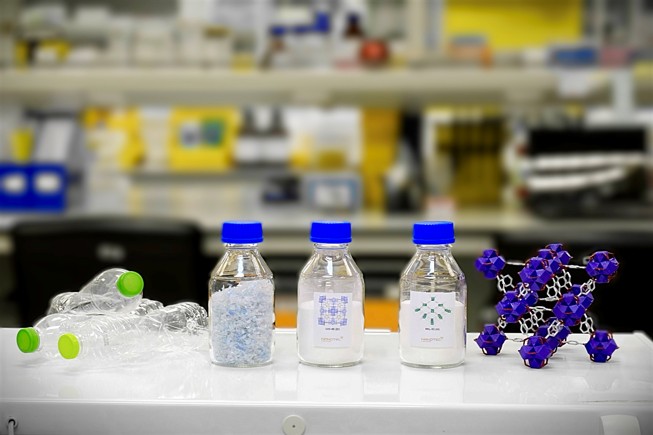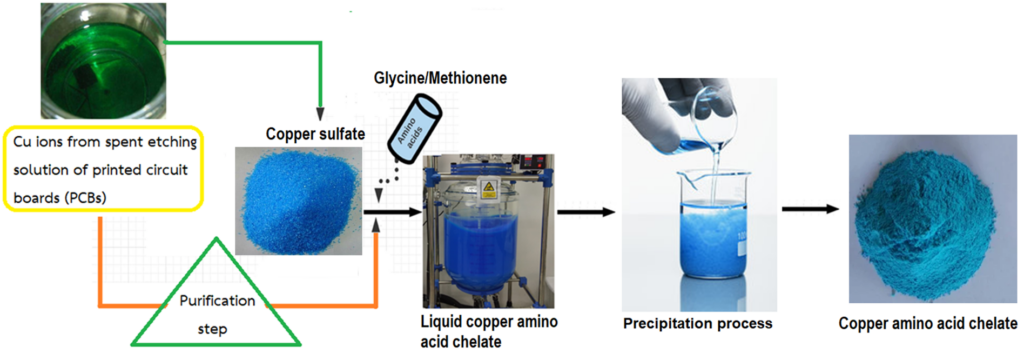Research
Waste utilization
Zero-Waste Materials: MOFs from Industrial and Plastic Refuse

Upcycling industrial waste into metal–organic frameworks (MOFs) offers a sustainable, circular approach to material development. Metal-rich wastes, such as slag or spent catalysts, serve as metal sources, while plastic waste provides organic linkers for MOF synthesis. This dual-waste strategy reduces pollution, cuts raw material costs, and supports green chemistry. The resulting MOFs possess high surface areas and tunable properties, making them suitable for various applications, including CO₂ capture, water harvesting, gas storage, chemical separation, catalysis, sensors, energy storage, thermal management, PEM fuel cell membranes, agriculture, and biomedical use.
Our team focuses on converting waste into metal-organic frameworks (MOFs) through environmentally friendly processes. It is developing scalable, modular systems capable of multi-kilogram production, thereby bridging the gap between lab innovation and industrial deployment to deliver sustainable, high-value material solutions.
Copper amino acid chelates from PCB industry

A printed circuit board (PCB) is an important basic component of an electronic circuit used to support and connect electronic components through a copper plate coated on the surface of the circuit board. The PCB contains components of electronic equipment called a printed circuit board assembly or PCB assembly (PCBA). The production and design of PCBs have several steps. Printing the copper for the interior layer using an etching solution is a crucial step in producing electronic equipment components, which involves designing the layout to create a PCB with a desired copper pattern. Unwanted copper, which is waste production and design of the PCB industry, is removed from the PCB by an etching solution.
To enhance waste value and utilization from the in-house industrial sector, our team recovered copper from the spent etching solution of PCB as a starting material to synthesize dry powder copper amino acid chelates for mineral supplements in animal feed products. This innovation expects that the recovery of copper from the spent etching solution of PCB can be reused to enhance copper value in the form of copper amino acid chelates for mineral supplements in animal feed, and lead to reducing unwanted copper waste in the PCB process.
Phosphorus recycling from swine wastewater and bio-based waste

Phosphorus (P) is an essential nutrient for all living organisms and a vital macronutrient for plant growth. Classified as a critical raw material by the European Commission, its main source – phosphate rock – is non-renewable and geographically limited, underscoring the need for sustainable P recovery and management strategies. Wastewater from livestock farms and the food processing industry contains high levels of phosphorus and other nutrients, contributing to nutrient pollution and eutrophication – rapid aquatic plant growth that disrupts ecosystems. In Thailand, swine farm effluent is a major source of algal blooms in natural water resources, commonly known as the “green water” problem.
To promote phosphorus reuse and recovery in the agro-industry value chain, our team developed a process to recover phosphorus, magnesium, and nitrogen from swine wastewater as struvite, a slow-release fertilizer. We also combined it with encapsulated phosphorus-solubilizing bacteria to enhance nutrient availability, especially in alkaline soils.


